
Date: November 15, 2019
Location: Lat: 25.556583°, Long: -79.879°
Dive Depth Range: 508 - 563 meters (1,667 - 1,847 feet)
Access Dive Summary and ROV Data
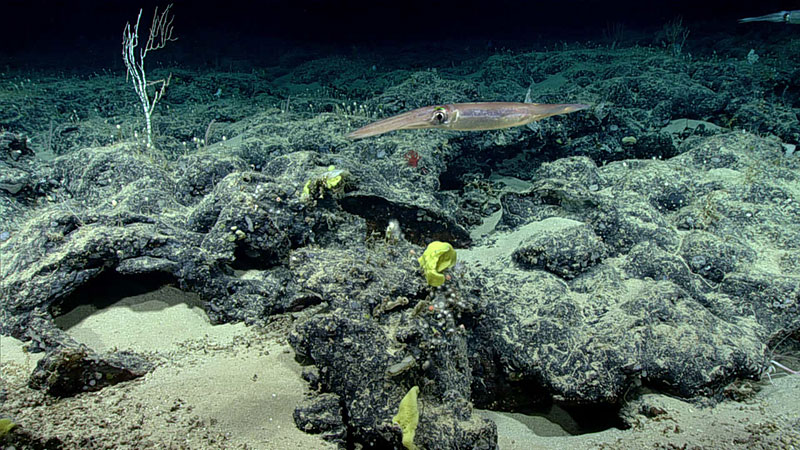
Sponges and squid, as seen here, were quite prevalent during Dive 08 of the 2019 Southeastern U.S. Deep-sea Exploration. Image courtesy of the NOAA Office of Ocean Exploration and Research, 2019 Southeastern U.S. Deep-sea Exploration. Download larger version (jpg, 1.4 MB).
After a full week without a dive, we were thrilled to be diving once again. It was a good day to be back in the water. Today we dove on a site about 18 nautical miles off the coast of Miami, Florida, on the Miami Terrace, which is within the Stetson-Miami Terrace Deepwater Coral Habitat Area of Particular Concern. The purpose of the dive was to learn more about the geology and biology of the area.
Upon landing on the slope of the Miami Terrace, we found ourselves surrounded by squid, and they kept us company throughout the dive. The seafloor was dominated by coral rubble with small patches of minimal rubble and unconsolidated carbonate skeletal sediments. There were some areas of exposed hardbottom that consisted of encrusted karstified limestone in varied forms, including large broken slabs and boulders. We saw most of the marine life around these hard surfaces.
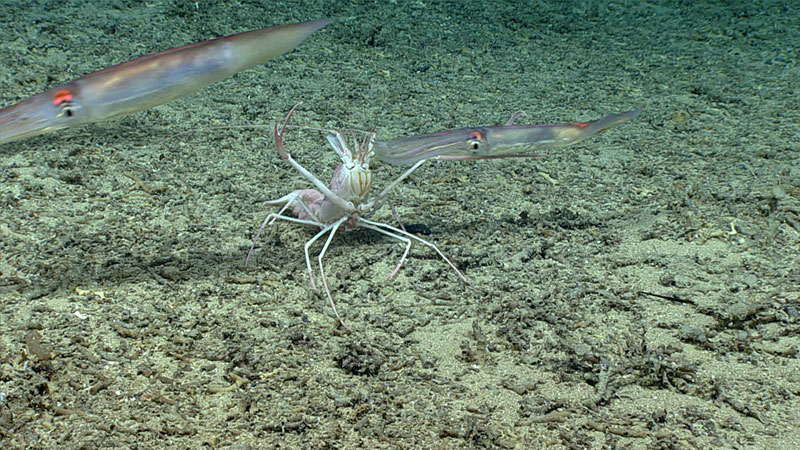
We saw a number of blind lobsters (Acanthacaris caeca) during Dive 08 of the 2019 Southeastern U.S. Deep-sea Exploration. Watch video of one of these lobsters as it appears to be fishing for prey by waving a small piece of organic tissue as bait. In this image, it was trying to grab a squid as it swam by. Image courtesy of the NOAA Office of Ocean Exploration and Research, 2019 Southeastern U.S. Deep-sea Exploration. Download larger version (jpg, 1.4 MB).
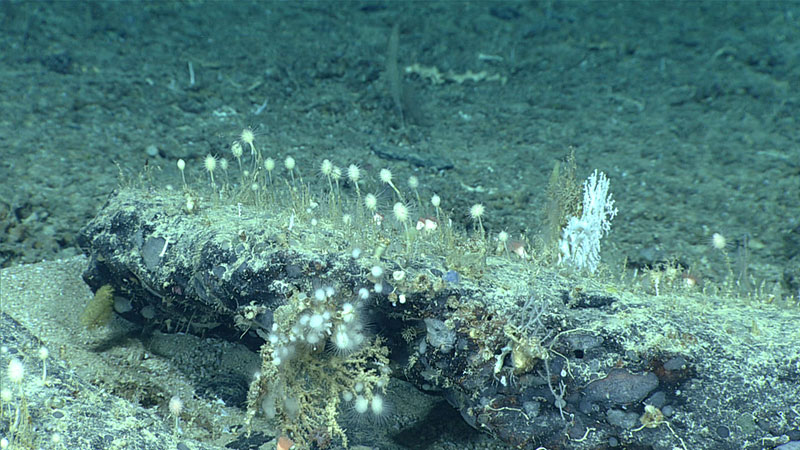
During Dive 08 of the 2019 Southeastern U.S. Deep-sea Exploration, we collected three carnivorous sponges that may be previously unknown species. Two of them (the “lollipops” and the white “puff balls”) are shown here. Image courtesy of the NOAA Office of Ocean Exploration and Research, 2019 Southeastern U.S. Deep-sea Exploration. Download larger version (jpg, 1.2 MB).
Even though there was a lot of coral rubble on the seafloor (and a few patches of standing dead coral frameworks), we saw very few living stony corals. While stony corals were sparse, we observed a variety of their relatives, including lace corals, primnoids, cup corals, bamboo corals, strawberry corals, and brown soft coral.
Sponges were not in short supply today. We saw a number of demosponges and glass sponges. Some we’d seen on previous dives during this expedition, and some we hadn’t. Notably, we saw three different carnivorous sponges (demosponges) that may be new to science. We were lucky enough to collect samples of these three sponges, which represent two families (Cladorhizidae and Stylocordylidae), as well as a glass sponge (Euplectellidae) and a rock.
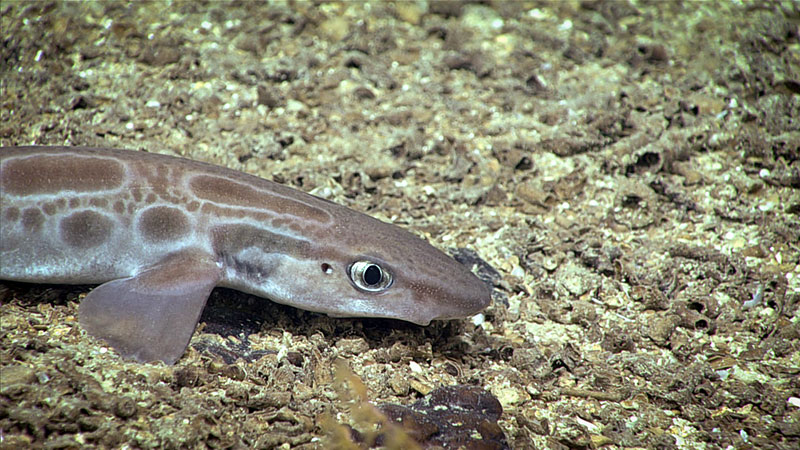
This marbled catshark (Galeus arae) was observed during Dive 08 of the 2019 Southeastern U.S. Deep-sea Exploration. Image courtesy of the NOAA Office of Ocean Exploration and Research, 2019 Southeastern U.S. Deep-sea Exploration. Download larger version (jpg, 1.4 MB).
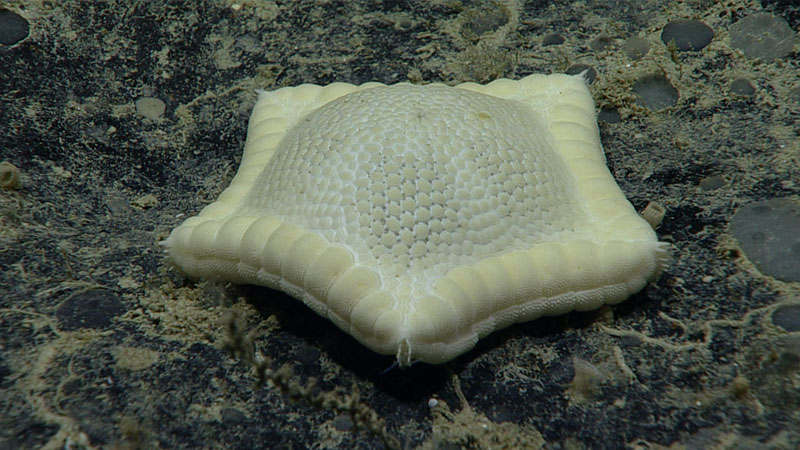
This cookie star seen during Dive 08 the 2019 Southeastern U.S. Deep-sea Exploration is likely a Plinthaster dentatus, which is widely occurring in the Western as well as the Eastern Atlantic. Image courtesy of the NOAA Office of Ocean Exploration and Research, 2019 Southeastern U.S. Deep-sea Exploration. Download larger version (jpg, 1.0 MB).
Among the other marine creatures we observed on this dive were golden crabs, blind lobsters, shrimp, a giant isopod, sea stars, and a sea cucumber covered in pteropod shells. We also saw a number of fish, including marbled catsharks, underworld skates, blackbelly rosefish, frogfish, rat tails, shortnose greeneyes, and codlings. One of the most interesting behaviors that we observed was by a blind lobster (Acanthacaris caeca) that appeared to be fishing for prey by using a small piece of organic tissue as bait (we even saw it trying to grab a squid as it swam by).
Not everything we saw on this dive was living or geologic. We saw more trash on this dive than any previous dive during this expedition to date. This was expected, though, given how close we were to the coast.
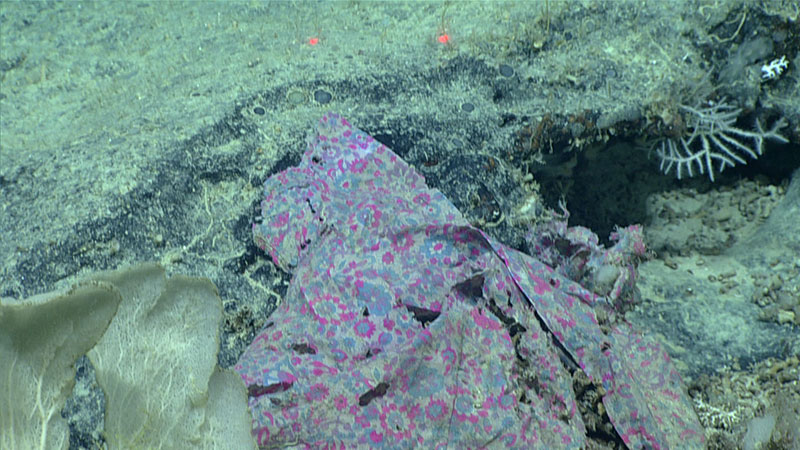
We saw more human debris on Dive 08 of the 2019 Southeastern U.S. Deep-sea Exploration than on any of the expedition’s previous dives. This was expected, though, given how close we were to the coast. Image courtesy of the NOAA Office of Ocean Exploration and Research, 2019 Southeastern U.S. Deep-sea Exploration. Download larger version (jpg, 1.1 MB).
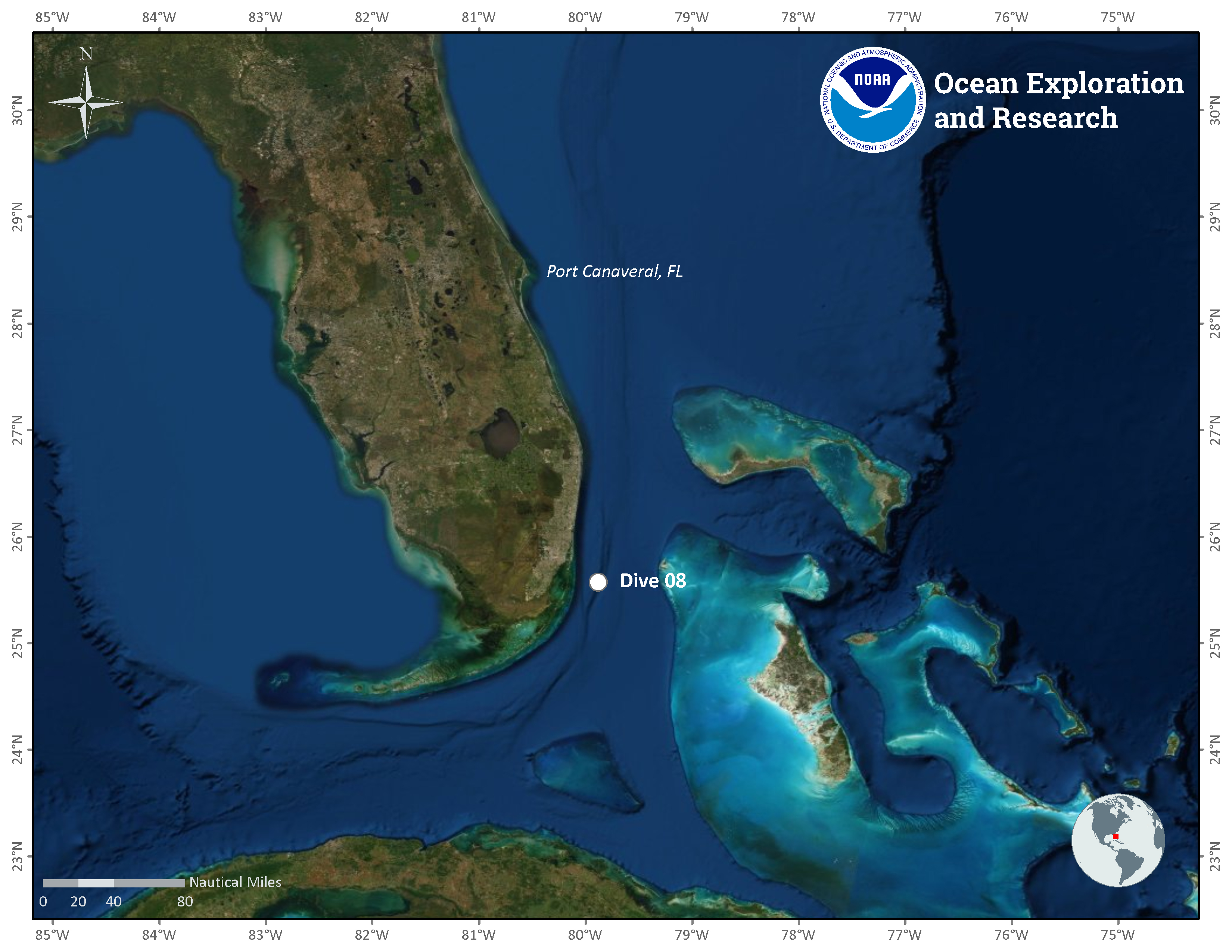
Location of Dive 08 of the 2019 Southeastern U.S. Deep-sea Exploration on November 15, 2019. Download larger version (jpg, 1.8 MB).
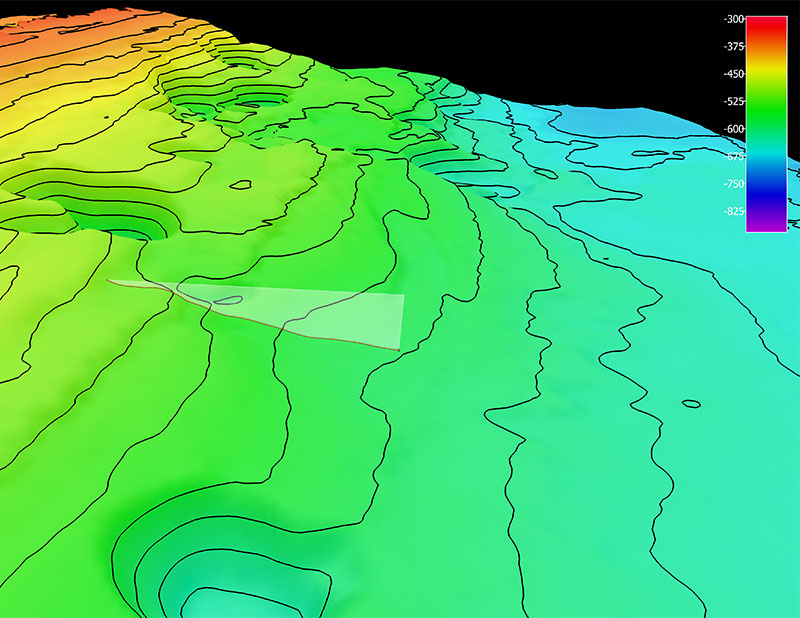
The remotely operated vehicle track for Dive 08 of the 2019 Southeastern U.S. Deep-sea Exploration, shown as an orange line with a white curtain. Legend shows water depth in meters. Download larger version (jpg, 3.6 MB).